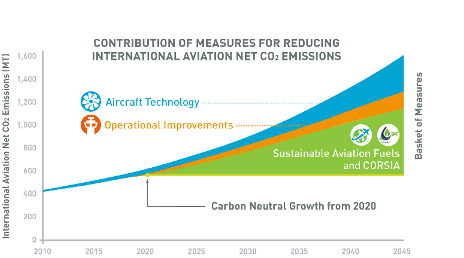Aviation Environment Protection Internationally
The International Civil Aviation Organization (ICAO) has placed great importance on protecting the environment of civil aviation. The member states of ICAO, signatories to the Chicago Convention, have agreed to focus their environmental cooperation in the international civil aviation sector on three key areas:
1. Climate Change and Aircraft Emissions
2. Aircraft Noise
3. Local Air Quality
The organization has developed a comprehensive guidance document, Annex 16 to the Chicago Convention, which includes four volumes on aircraft noise, aircraft engine emissions, air quality, aircraft carbon dioxide emissions, and CORSIA (Carbon Offsetting and Reduction Scheme for International Aviation) action plan. The organization updates standards and guidance materials on environmental issues based on the latest available science and scientific knowledge regarding the impact of civil aviation industry activities on the environment.

ICAO aims to contribute to the achievement of the Paris Agreement’s objectives on climate change, which is keeping the global temperature increase below 2 degrees Celsius. It has adopted a Long-Term Aspiration Goal (LTAG) to mitigate the negative impacts of international civil aviation activities on the global climate by achieving net-zero emissions by 2050. In order to achieve the long-term aspiration goal, the organization is pursuing a basket of measures that includes mitigation measures that can be taken to reach the specified objective. These measures include aircraft technology improvements, operational improvements, sustainable aviation fuels, and global market-based measures (CORSIA) for offsetting and reducing carbon emissions from international flights.
Source: Climate Change (icao.int)
According to studies, alternative aviation fuels can achieve the largest proportion of emissions reduction in the international civil aviation sector (55% by 2050). Alternative fuels include:
1. Sustainable Aviation Fuel (SAF): Renewable aviation fuel derived from waste, biomass, or captured carbon that meets sustainability criteria (Sustainable Aviation Fuel (SAF) (icao.int)
2. Lower Carbon Aviation Fuels: Fossil-based fuel produced using mechanisms that meet sustainability criteria (Lower Carbon Aviation Fuels (icao.int)
3. Clean energies such as hydrogen and electricity
ICAO launched the State Action Plan initiative in 2010 to enable member states to develop long-term climate change strategies in the international aviation sector. This includes establishing a baseline scenario for carbon dioxide emissions from international civil aviation, selecting appropriate mitigation measures from the organization's basket of measures, and calculating the expected results of implementing those measures (State Action Plans and Assistance (icao.int)
*Further information about Aviation Environment Protection:
Environmental Protection (icao.int)
ICAO Environmental Report 2022